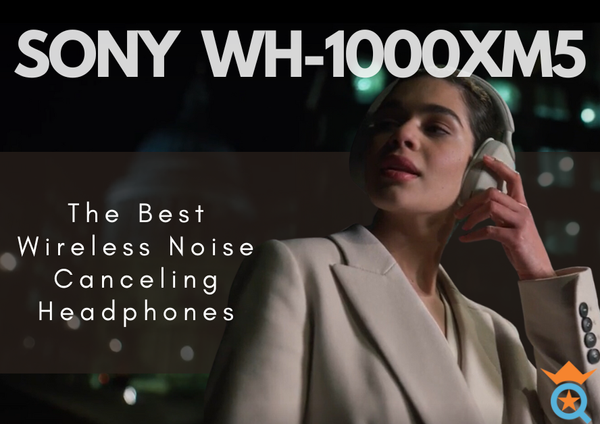Headphones are growing more revolutionary in today's quickly evolving globe. With Bluetooth technology, the market for wireless headphones has grown, giving people a wide range of choices. Choosing a set of headphones may be challenging due to the abundance of options.
However, worry no more! So that you may make an informed decision, let's go into the world of headphones and dissect the many Bluetooth headset types.
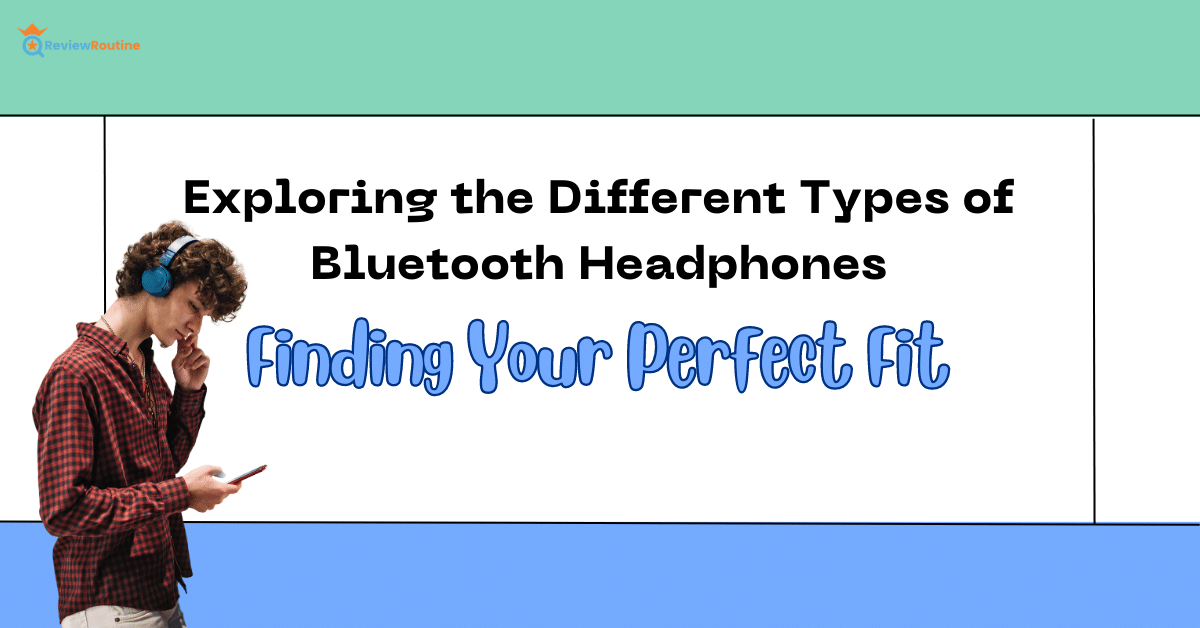
Headphones Based on Fit
Broadly speaking, headphones are devices with two ear cups that house speaker drivers or transducers, converting audio signals into analog sound waves. While they can be categorized according to design, connectivity, and technology, fit is a common and highly practical way to differentiate between different types of headphones.
Here's a roundup of the most popular fits for Bluetooth headphones:
1. Over-Ear Headphones
Over-ear headphones, also known as circumaural headphones, are a popular choice among those who prioritize comfort. Their large ear cups fully encompass the entire ear, providing a cozy sound cocoon. For those who enjoy listening to music, playing video games, or just being immersed in sound, these headphones are ideal.
Over-ear headphones, despite their bulky shape, are a godsend for glasses-wearers because they exert pressure around the ears rather than on them, giving a comfortable listening experience.
2. On-Ear Headphones
On-ear headphones, or supra-aural headphones, come with smaller ear cups that sit snugly on the outer ear. They offer a lightweight and versatile alternative to over-ear headphones. These headphones provide a fantastic balance between sound quality and portability, despite not being quite as portable as wireless earbuds. They are therefore a fantastic option for those who are constantly on the go or don't want to wear earbuds.
3. Open-Ear Headphones
Open-ear headphones, an innovative design in the world of headphones, don't cover the ears at all. These headphones sit comfortably over the cheek and jawbone area, making them distinct from the crowd. This design is a godsend for commuters and outdoor enthusiasts as it keeps users aware of their surroundings, whether jogging on a bustling street or waiting for boarding calls at the airport.
4. Clip-On Headphones
Clip-on headphones discard the traditional headphone design for a more minimalist approach. These headphones feature thin discs with speaker drivers and hooks that securely fit around the ears. With their larger drivers and hands-free convenience, they are an excellent choice for outdoor activities like hiking, biking, or even for chores requiring continuous hand use.

2 Types of Earbuds Based on Fit
Earbuds, the miniature cousins of headphones, are designed for users who value compactness and discretion. Let's explore the two common types of earbuds:
1. In-Ear Monitors
In-ear monitors (IEMs) are made to fit snuggly into the ear canals, giving the listener a full-bodied sound experience. These are a favorite among audiophiles, commuters, athletes, and musicians for their exceptional sound quality and portability. With regular cleaning and maintenance, these tiny marvels can provide a clean, accurate sound while preventing ear infections.
2. Classic Earbuds
IEMs can be swapped out for conventional earbuds, which are less expensive and fit at the ear canal's opening. These earbuds are ideal for anyone who is sensitive to sound or prone to ear infections due to their shallow insertion into the ear canal. Due to their universal fit, traditional earphones like the AirPods are a flexible option for the majority of consumers.
The choice of Bluetooth headphones ultimately comes down to individual needs and preferences. Whether you require headphones for your daily commute, your gaming sessions, or simply to enjoy high-quality audio at home, there is a set of headphones out there that is perfect for you.
Now that you are knowledgeable about the many kinds of Bluetooth headphones, make your decision.
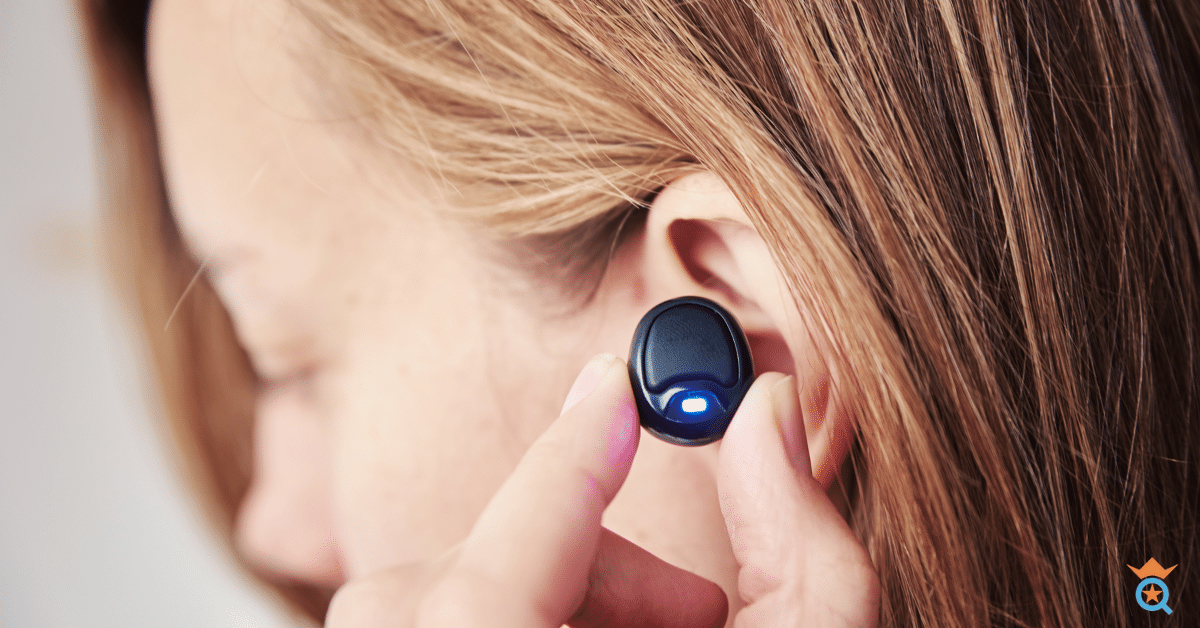
Types of Bluetooth Headphones Based on Design
The headphone design can significantly affect your listening experience. We'll examine two fundamental design types here: closed-back and open-back headphones.
1. Closed-back Headphones
In closed-back headphones, the drivers are entirely encapsulated within a hard shell—usually made of plastic, wood, or metal. This design helps direct the sound straight from the speakers to your ears with minimal sound leakage.
Closed-back headphones, owing to their sound isolation and minimal sound leakage, are popular among recording artists and professionals requiring a quiet setting for their work.
Top closed-back Bluetooth headphones:
- Audio-Technica ATH-M70X
- Sony MDR7506
2. Open-back Headphones
Open-back headphones, conversely, allow for air to flow through the ear cups, enabling sound waves to move both toward and away from your ears. You will have an immersive listening experience because of the broader soundstage and more natural sound quality provided by this. Audiophiles that prefer a more accurate sound profile, are a great option.
Top open-back Bluetooth headphones:
- Sennheiser HD650
- Sony LinkBuds
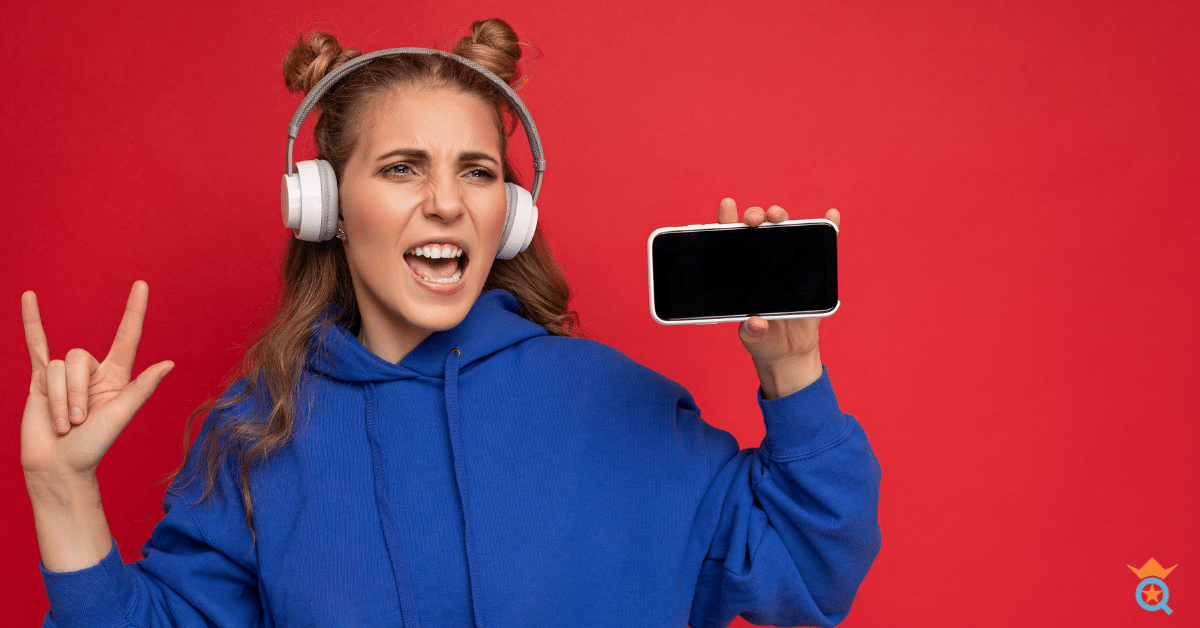
Types of Bluetooth Headphones Based on Connection
Now let's focus on the types of connections that Bluetooth headphones use. We'll look at wired, wireless, and true wireless options.
1. Wired Bluetooth Headphones
When it comes to wired Bluetooth headphones, the typical design is two speaker drivers connected by wires leading to a single 3.5mm plug that plugs into the corresponding jack on your audio device. However, not all wired headphones use this configuration exclusively. The wired option is suitable for music production, gaming, or any scenario where sound quality and minimal latency are paramount.
Top wired Bluetooth headphones:
- Beats EP Wired On-Ear Headphones
- Skullcandy Ink’d+ Wired Earbuds
2. Wireless Bluetooth Headphones
Wireless headphones connect to audio devices via radio frequency, infrared, or, most commonly, Bluetooth technology. These are ideal for those needing freedom of movement without compromising too much on sound quality. Perfect for exercise or household chores.
Top wireless Bluetooth headphones:
- Soundcore Anker Life Q20
- Elgin Ruckus Discord Bluetooth Earbuds
3. True Wireless Earbuds
True wireless earbuds are two separate earpieces connected wirelessly. These earbuds are entirely devoid of wires, even between the two earpieces, providing ultimate freedom of movement. They are perfect for those constantly on the move and offer fast charging and long battery life for additional convenience.
Top true wireless earbuds:
- Samsung Galaxy Buds 2
- Sennheiser MOMENTUM True Wireless 3 Earbuds

Types of Headphones Based on Technology
Apart from design and connectivity, advanced features enhance sound quality and listening experiences. Here's a deeper look at some of these technologies:
1. Noise-Canceling Headphones: Your Peace Bubble
Noise-canceling headphones boast an ingenious technology, where microphones pick up ambient noise and create an opposing audio frequency. This technique cancels out noise interference, leaving you with pure sound. Active Noise Cancellation (ANC) and Passive Noise Cancellation are the two types of noise cancellation technologies.
Top Noise-Canceling Headphones
- Bose 700
- Sony WH-1000XM5
2. Bone Conduction Headphones: Feel the Beat
Bone conduction headphones operate uniquely by delivering sound vibrations directly to your inner ear through your cheek and jawbones, bypassing the ear canal. They're especially beneficial to individuals with conductive hearing loss, which impacts the outer and middle ear.
Prime Bone Conduction Headphones
- SHOKZ OpenRun Pro
- YouthWhisper Bone Conduction Headphones
3. Headset: The All-Rounder
The headsets look like any other headphones, but they stand out with a boom mic fixed to an ear cup, providing accurate voice pickup. They're vital for jobs that involve frequent calls and gamers participating in online gaming and e-sports.
Notable Headsets
- Turtle Beach Stealth 700
- Jabra Evolve2 85
4. Air Tube Headphones: Safe Listening
Air tube headphones are designed with a unique element to reduce exposure to EMF radiation. Sound travels up traditional metal wires and transitions to hollow plastic tubes to produce harmless sound waves at your ear tips.
Leading Air Tube Headphones
- DefenderShield EMF-Free Air Tube Headphones
- KINDEN Air Tube Headphones

Selecting Your Ideal Bluetooth Headphones: Factors to Consider
There are a few important considerations that can help you choose the perfect Bluetooth headphones. These elements will make sure that you select headphones that satisfy your unique requirements and offer a pleasurable listening experience.
Let's focus on these crucial factors in more detail:
1. Sound Quality
One of the most critical factors to consider when choosing Bluetooth headphones is the sound quality they offer. Pay close attention to the audio performance and sound signature of the headphones. Look for headphones that deliver clear, balanced sound with good bass response and crisp highs.
It's essential to find headphones that align with your listening preferences, whether you enjoy deep bass for electronic music or accurate sound reproduction for classical compositions. Consider reading reviews or trying out the headphones yourself to get an idea of their sound quality.
2. Battery Life
Another important consideration is battery life, particularly if you intend to use your Bluetooth headphones while traveling or for extended periods of time. Consider your usage patterns and lifestyle to determine the battery longevity that will suit your needs. Look for headphones that offer a battery life that aligns with your typical usage duration.
Whether you need headphones that last a few hours or ones that can provide all-day playtime, finding headphones with the right battery life will ensure uninterrupted listening enjoyment. Additionally, evaluate if the headphones' charging choices, like quick charging or wireless charging, suit your preferences.
3. Comfort
Comfort is an important consideration, particularly if you plan on wearing your Bluetooth headphones for extended periods. Look for headphones that provide a comfortable fit for your head shape and ear size. Adjustable headbands, cushioned ear cups, and lightweight designs can contribute to a pleasant and fatigue-free listening experience.
It's important to keep in mind that everyone has different comfort preferences, so it's wise to try on the headphones or read user reviews to get a sense of how comfortable they are. Whether you're listening to music on a lengthy journey or a strenuous workout, comfortable headphones make sure you can do so comfortably.
4. Compatibility
Before making a purchase, it's crucial to check the compatibility of the headphones with your devices. Ensure that the headphones support the necessary Bluetooth versions and codecs that your devices use. The majority of Bluetooth headphones are made to function with a variety of gadgets, such as smartphones, tablets, and PCs.
However, it's still important to verify compatibility to avoid any compatibility issues or limitations. Checking the specifications or consulting customer support can provide clarity on whether the headphones will seamlessly connect to your devices.
You can choose Bluetooth headphones that properly suit your preferences and way of life by taking these elements into account: sound quality, battery life, comfort, and compatibility.
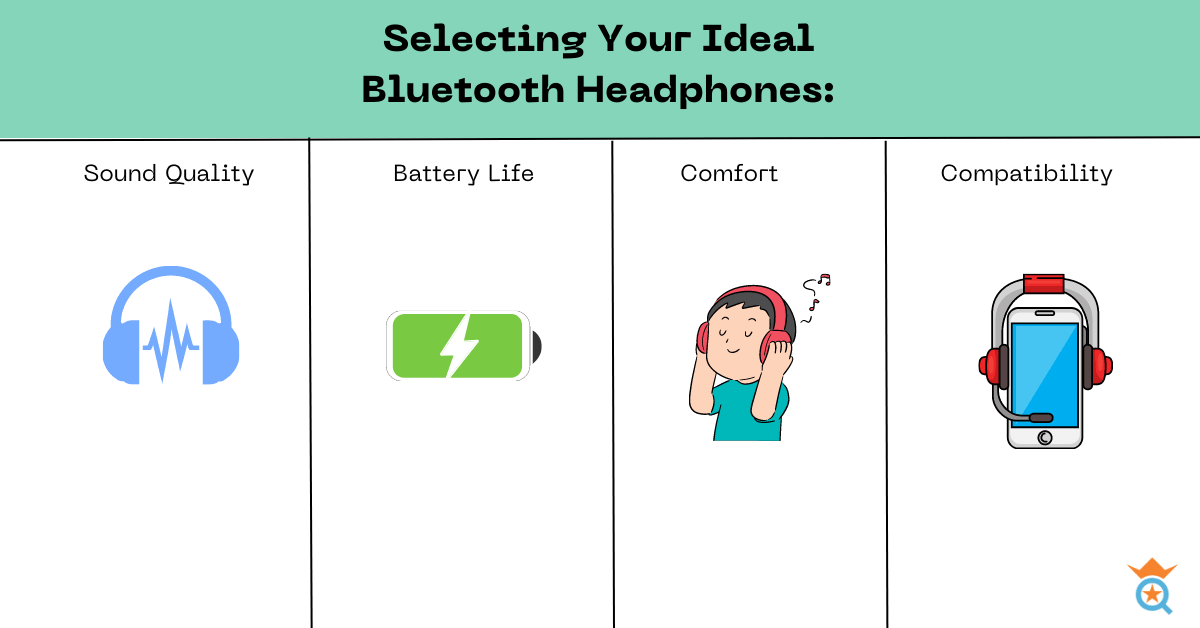
Specifications of Headphones
This handy guide will help you understand the ins and outs of headphone specifications, empowering you to make the best decision when it comes to enjoying high-quality sound from your device.
- Drivers in Wireless Headphones: Every pair of headphones, whether they're over-ear headphones or in-ear headphones, has a little something called 'drivers'. This is the heart and soul of your headphones. These tech wizards, known as drivers, convert the electric signals from your device into the sound waves that your ears understand and love.
- Transducer Technology: Ever wondered about the magic that happens inside your Bluetooth headphones that turn your favorite songs into audible delights? The credit goes to transducer technology. This tech wonder changes one form of energy (like electrical energy from your device) into another (the sound energy that you hear). Now, isn't that cool?
- The Frequency Response Spectrum: The promise made by headphones to reproduce all the highs, mids, and lows in your music is analogous to their frequency response. It describes the spectrum of sounds your headphones are capable of producing. It's a key element in determining how well your wireless headphones sound.
- Impedance: You've probably heard the term "impedance" while looking for the ideal set of headphones. The amount of resistance your headphones provide to the electric signal coming from your device is referred to as impedance.
- Sensitivity and Sound: Sensitivity is the measure of how efficiently your headphones can convert an electrical signal into sound. The less power your headphones need to provide you with a fantastic listening experience, the higher the sensitivity.
- Harmonic Distortion: Total harmonic distortion, often known as harmonic distortion, refers to how faithfully your headphones replicate the sound in comparison to the original recording. The lower the distortion, the more authentic and true-to-original the sound will be.
- The Sound Pressure Level and Your Comfort: The Sound Pressure Level (SPL) indicates how loud your headphones can get. It's crucial because you want your headphones to be loud enough to drown out any ambient noise without damaging your ears.
- Maximum Input Power: This term refers to the amount of power your headphones can withstand before becoming unstable. By being aware of this, you can avoid accidentally damaging your headphones by turning the volume up too loud.
- Noise Attenuation: Noise attenuation describes how effectively background noise is muffled by your headphones. If you want some peace and quiet in a noisy setting, it's one of the main features of noise-canceling headphones and a blessing.
From exploring the depth of sound with different types of Bluetooth headphones, the power of drivers, and understanding crucial terms like frequency response, sensitivity, and impedance, we've covered the breadth and depth of headphone specifications.
All this knowledge equips you to find your perfect pair of headphones, offering optimal sound quality and an unparalleled listening experience.

Wrapping Up
The first step to ensuring the best listening experience is to understand the various Bluetooth headset's kinds. Whether you prefer the sound isolation of closed-back headphones, the authentic sound of open-back headphones, the portability of earbuds, or the cordless freedom of Bluetooth headphones, there is a superb set of headphones out there for everyone.
Now that you have this knowledge, you're ready to learn more about high-end headphones and enhance your audio experience.
Frequently Ask Questions
What kinds of Bluetooth headsets are there?
One of the many types of Bluetooth headsets available are wireless headphones and wireless headsets. These headsets link wirelessly to audio equipment using Bluetooth technology, enabling hands-free calling and music playback.
What are the different types of headphones?
There are numerous varieties of headphones on the market. Headphones come in a variety of styles, including wireless, wired, bone-conduction, and noise-canceling versions. To accommodate varied user preferences, each type offers unique features and advantages.
What are the 2 types of earbuds?
Earbuds, often known as in-ear headphones, come in two varieties: conventional earbuds and Bluetooth earbuds. While Bluetooth earbuds connect wirelessly to the device utilizing Bluetooth technology, conventional earbuds are wired to the audio device.
What is the difference between RF and Bluetooth headphones?
RF (Radio Frequency) headphones and Bluetooth headphones are two different wireless technologies. RF headphones use radio waves to transmit audio signals, typically requiring a dedicated transmitter and receiver. In contrast, Bluetooth headphones link wirelessly and directly to a suitable device, like a computer or smartphone, using Bluetooth technology.
What are the three main types of headphones?
Over-ear, on-ear, and in-ear devices are the three primary categories of headphones.
With ear cups that completely encircle the ear, over-ear headphones offer exceptional sound quality and noise isolation. On-ear headphones sit on the ears, and in-ear headphones, which enable portability and effective noise isolation, fit comfortably inside the ear canal.






